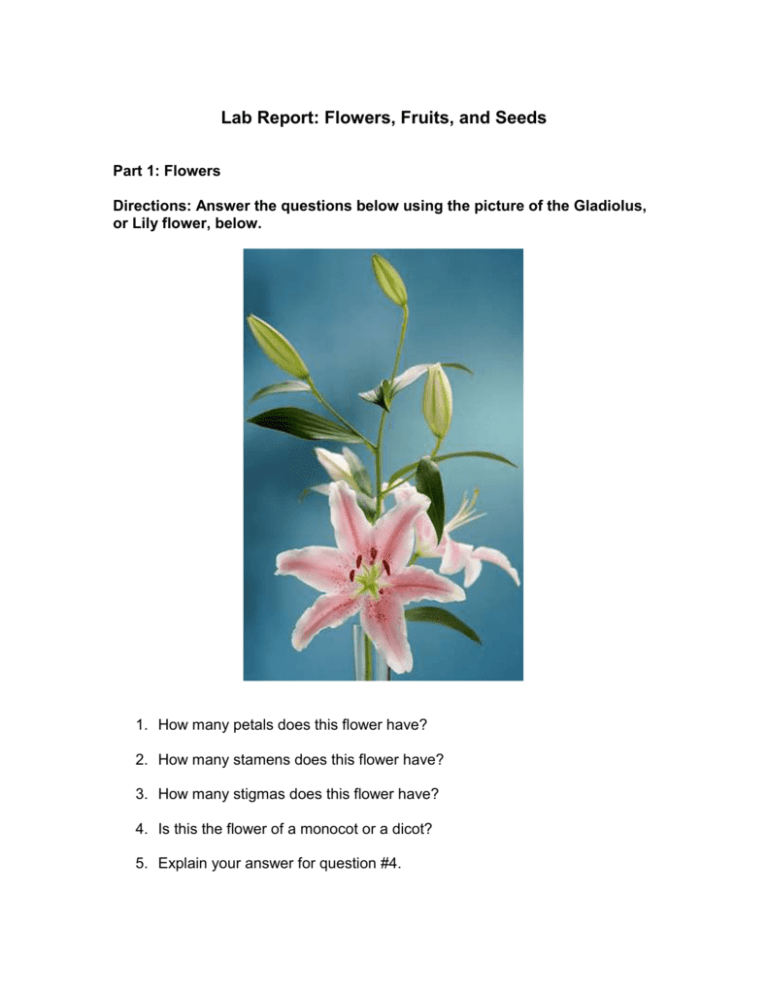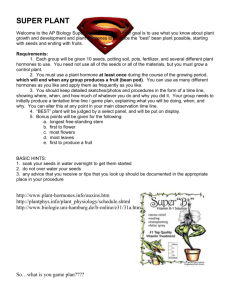Lab Report: Flowers, Fruits, and Seeds
advertisement

Lab Report: Flowers, Fruits, and Seeds Part 1: Flowers Directions: Answer the questions below using the picture of the Gladiolus, or Lily flower, below. 1. How many petals does this flower have? 2. How many stamens does this flower have? 3. How many stigmas does this flower have? 4. Is this the flower of a monocot or a dicot? 5. Explain your answer for question #4. 6. Is this flower perfect or imperfect? 7. Look at the image of the lily ovary below. How many locules are in this ovary? Part 2: Fruits Directions: Answer the questions below using your knowledge and the information from the lesson over fruits. 1. Where would you expect to find the withered sepals and petals on a freshly picked tomato? 2. How about the style and stigma? 3. How does this compare to the apple fruit? 4. Bean plants have superior ovaries. Where would you expect to find the withered sepals and petals on a freshly picked bean pod? 5. How about the style and stigma? 6. How does this compare to the tomato fruit? Part 3: Seeds Directions: Answer the questions below using your knowledge and the information from the lesson over fruits. 1. Since there are two seed cotyledons in bean seeds, beans are classified as dicots. The image below shows several bean plants. Using the picture above, are the leaves of the bean plants consistent with the venation pattern of the leaves of dicots? 2. If you stain a cut corn kernel with a drop of potassium iodide, the cotyledon and the endosperm, but not the embryo, will stain blue-black. What does this indicate the presence of? 3. Why is this important to the plant embryo? 4. Examine various stages of the germination of both beans and corn shown in the diagrams below. List two similarities and two differences between the germination of corn and bean seeds below.





